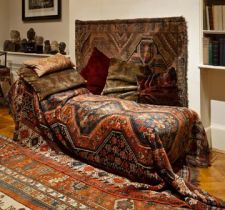-
Recent Posts
Recent Comments
Archives
Categories
Meta
Fort McMoney Website
Posted in Uncategorized
Tagged activism, alberta, art, canada, cinema, documentary, first nations, fort mcmoney, fort mcmurray, native, nfb, oil sands
Healing Walk Through Canada’s Tar Sands with the Cree
Posted in Uncategorized
Tagged activism, alberta, first nations, native, native rights, protest, tar sands
Gender Bender: German Dads Demand Family Time
Demanding family time isn’t just for women anymore in German corporate culture.
Jung Exhibition from the Rubin Museum
http://www.rubinmuseum.org/theredbook
This unprecedented exhibition marks the first public presentation of the preeminent psychologist C. G. Jung’s (1875-1961) famous Red Book. During the period in which he worked on this book Jung developed his principal theories of archetypes, collective unconscious, and the process of individuation. It is possibly the most influential unpublished work in the history of psychology. More than two-thirds of the large, red, leather-bound manuscript’s pages are filled with Jung’s brightly hued and striking graphic forms paired with his thoughts written in a beautiful, illuminated style. Jung was fascinated by the mandala—an artistic representation of the inner and outer cosmos used in Tibetan Buddhism to help practitioners reach enlightenment—and used mandala structures in a number of his own works. Jung’s first known mandala-like work, Systema mundi totius (1916), will be on display. Created between 1914 and 1930, the Red Book has never before been seen in public, outside the circle of Jung’s family and very close friends. Alongside the 95-year-old volume will be a number of oil, chalk, and tempera paintings and preparatory sketches related to it and other original manuscripts, including the Black Books, which contain ideas and fantasies leading up to the Red Book. The exhibition coincides with W.W. Norton & Company’s publication of a facsimile and translation of the Red Book.
Copies of the new publication will be available for perusal in a reference area in the gallery and available for purchase in the Shop @ RMA. The works of art and archival materials included in The Red Book of C.G. Jungare on loan from the Foundation for the Works of C. G. Jung, the Jung family private archive, and private collections. W.W. Norton & Company’s publication is edited by Dr. Sonu Shamdasani, General Editor of the Philemon Foundation and Philemon Professor in Jung History at the Wellcome Trust Centre for the History of Medicine at University College, London. The Red Book is one of the volumes of the Philemon Series, sponsored by the Philemon Foundation.
Freud Museum
http://www.freud.org.uk/education/topic/10576/interpretation-of-dreams/
The History of the Museum
The Freud Museum, at 20 Maresfield Gardens in Hampstead, was the home of Sigmund Freud and his family when they escaped Austria following the Nazi annexation in 1938. It remained the family home until Anna Freud, the youngest daughter, died in 1982. The centrepiece of the museum is Freud’s study, preserved just as it was during his lifetime.
It contains Freud’s remarkable collection of antiquities: Egyptian; Greek; Roman and Oriental. Almost 2,000 items fill cabinets and are arranged on every surface. There are rows of ancient figures on the desk where Freud wrote until the early hours of the morning. The walls are lined with shelves containing Freud’s large library.
The house is also filled with memories of his daughter, Anna, who lived there for 44 years and continued to develop her pioneering psychoanalytic work, especially with children. It was her wish that the house become a museum to honour her illustrious father. The Freuds were fortunate to be able to bring all their furniture and household effects to London. These included splendid Biedermeier chests, tables and cupboards, and a fine collection of 18th and 19th century Austrian painted country furniture.
Undoubtedly the most famous piece of furniture in all the collection is Freud’s psychoanalytic couch, on which all of his patients reclined. The couch is remarkably comfortable and is covered with a richly coloured Iranian rug with chenille cushions piled on top. Other fine Oriental rugs, Heriz and Tabriz, cover the floor and tables.
Posted in Uncategorized

